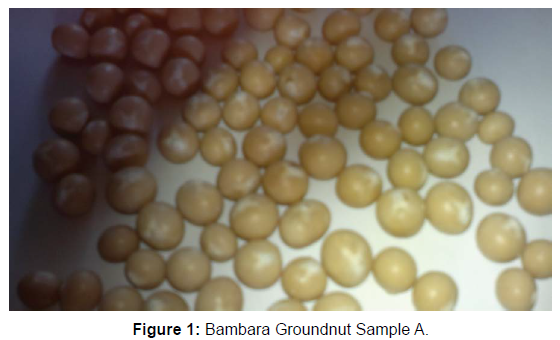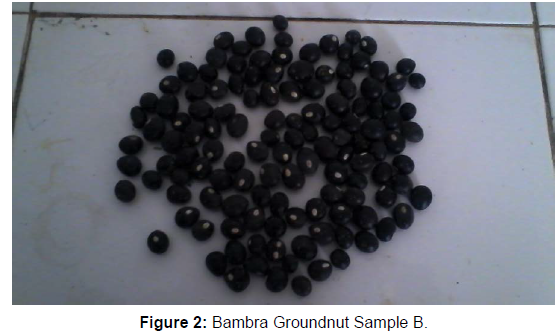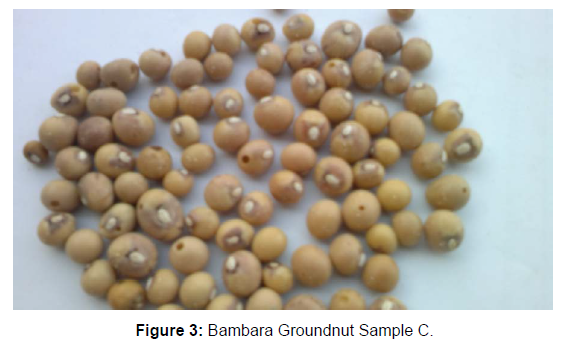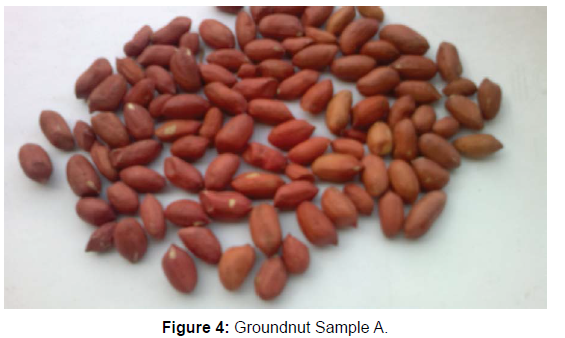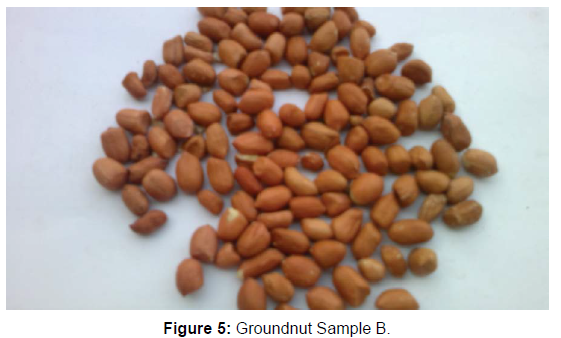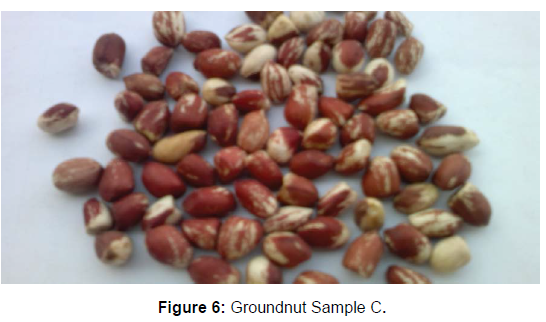Comparative Analysis of Proximate and Mineral Compositions of Bambaranut (Vigna-subterranea) and Groundnut (Arachis-hypogea)
Abstract
The Proximate and Mineral Compositions of Bambaranut and Groundnut varieties were determined. The carbohydrate (68.10%) protein (14.66%), crude fat (5.6%) and Ash (3.33%) content bambaranut were found to be significantly higher (P<0.05) compared to groundnut Carbohydrate (36.60%), Protein (12.33%), crude fat, (39.33%) and Ash (2.33%) content. Whereas the moisture (2.90%), crude fibre (2.07%) was found to be insignificant compared to groundnut (2.93%), crude fibre (1.77 %.) The results of the study show that Legumes have good nutritional attributes. The high energy, protein and carbohydrate contents of both varieties suggest that legumes could be of great importance in alleviating protein energy malnutrition. In the mineral elements, there is significant difference in S (8.52mg/kg), Na (28.63mg/kg), and P (40,00mg/kg) in bambaranut compared to groundnut S (7.45mg/kg), Na (27.13mg/kg), and P (33.33mg/kg). However, no significant difference was observed at P (<0.05) in bambaranut ca, (37.16mg/kg), Pb, (0.44mg/kg), and K (291.53 mg/kg) compared to groundnut ca(37.70mg/kg), Pb(0.29mg/kg), and K (289.50mg/kg). The concentration of the minerals in this legume indicates that they could be useful in the diets of consumers. The results reveals that bambaranut have higher nutritional value than groundnut.
Keywords: Proximate, Minerals, Bambaranut, Groundnut, Nutrition.
Keywords
Proximate; Minerals; Bambaranut; Groundnut; Nutrition
Introduction
Legumes are a cheap source of protein and minerals in many African countries, since animal protein is very expensive. Bambara groundnut (Vigna subterranean L.) is one of the many legumes that can provide the protein and minerals. The seeds are a complete food, as they contain sufficient quantities of proteins, carbohydrate and lipids [1]. This legume can positively contribute to food security and help to alleviate nutritional problems. However, it has been classified as an underutilized crop and is only receiving more attention in the recent past. As the shortage of food continues to be a major problem in Africa, these legumes are being promoted more than before in order to help in combating malnutrition [13]. This crop is drought resistant; it tolerates poor soils and is fairly resistant to pests and diseases. Bambaranut is extensively cultivated in Africa at a subsistence level and is the third most important legume crop after cowpea and groundnut [6] and it is widely consumed in Southern Africa The mature Bambara groundnut oil is predominantly made of the unsaturated fatty acids such as palmitoleic, oleic and caprylic acids which are among the essential fatty acids required by the body. These fatty acids are primarily used to produce hormone like substance that regulates a wide range of functions, blood pressure, blood clotting, blood lipidlevel and inflammatory response to injury infections. Therefore, they are essential in human diet since no synthetic mechanisms are available for their production in human body [15]. The dried seeds can also be soaked and the testa removed and the seeds ground into a paste. The latter can be made into different steamed or fried products [25] Groundnut (Arachis hypogaea L.) is among the major oilseeds in the world. China, India and USA are the main producers of groundnuts to the rest of the world [9]. In India groundnuts are used mainly for oil extraction. JL 24 which is also known as PhulePragati, was developed at Jalgoan, India and released for commercial cultivation for Maharashtra and Gujarat, India and is adapted all over India. It is a nearly maturing type with dark green leaves and is much preferred because of its bold seed and has maturity period of 90-95 days with smooth pods and pink kernels. In 2003, the US food and drug administration reported that scientific evidence suggests that eating 1.5 ounces (43 g) per day of most nuts (including peanuts), as part of a diet low in saturated fat and cholesterol, may reduce the risk of heart disease [2]. Recently, it has been associated with metabolic benefits in the context of counteracting metabolic dysfunction associated with the increasing prevalence of obesity and metabolic syndrome [11]. Groundnut (Arachis hypogaea L.) Groundnut is now grown worldwide in the tropical and temperate zones primarily as an oil seed crop [10]. The Chemicals composition of groundnut seed has been evaluated in relation to protein level and fatty acid composition [16], in some cultivars. The substance is ingested by an organism and assimilated by the organism cells in an effort to produce energy, maintain life or stimulate growth [12]. Bambara groundnut is predominantly grown for human consumption. Consumers often prefer the immature seeds, which are boiled in the pod, salted, and consumed, either on their own or mixed with maize seeds [7]. When the seeds are ripe and dry, they are pounded into flour and used to make a variety of cakes, or are mixed with cereals and used to prepare several types of porridge. Livestock, especially goats, are very fond of the haulm, which they are allowed to graze on at the end of the season, after the pods have been harvested. Peanuts are often a major ingredient in mixed nuts because of their relative cost compared to Brazil nuts, cashews, walnuts and so on. Although peanut butter has been a tradition on camping trips and because of its high protein content and because it resists spoiling for long periods of time. Large quantities are also used in the commercial manufacture of sandwiches, candy, and bakery products. Boiled peanuts are a preparation of raw, unshelled green peanuts boiled in brine and often eaten as a snack. More recently, fried peanut recipes have emerged – allowing both shell and nut to be eaten [7] (Figures 1-6).
Materials and Method
Sample collection
Bambara groundnut (Vigna subterranean) and groundnut (Arachis hypogea) seeds were purchased from Dawanau Market in Kano, North West of Nigeria. The varieties selected are black, white eye, white red eye typed for the Bambara groundnuts and the blanket image, red and white typed for Arachis hypogea. The seeds were identified and authenticated by botanist from department of Plant Science, Bayero University, Kano. The Samples were pulverized using a laboratory mortar and pestle. Sieved and kept in the laboratory before analysis.
Methods
Proximate Analysis
Proximate analysis was carried out to ascertain the percentage compositions of ash, crude protein, crude fibre, carbohydrate, crude fat and the moisture contents. The standard prescribed methods of the Association of Officials of Analytical Chemists AOAC, [4] were adopted.
Determination of Moisture Content
The sample of (5g) was placed in it. The Petri-dish together with the sample was weighed as (W2). It was then placed into the oven at 1200C for 3 hours. The dish was removed and cooled in dessicator for 30 minutes and finally weighed (W3).
Calculation
% moisture content = X 100
X 100
Where;
W1 = initial weight of the dish (in grams)
W2 = initial weight of dish±sample (before drying)
W3 = final weighed of dish±sample (after drying)
Determination of Ash Content
Dried, moisture-free sample (5g) was placed into a crucible and weighed (W2). The sample was placed in the muffle furnace at 5500C for 3 hours. The ash was covered with Petri-dish and allowed to cool after which it was then weigh as (W3).
Calculation
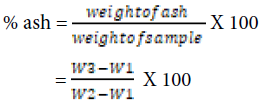
Determination of Crude Protein
Principle
The determination of protein is based on Kjeldhal procedure which includes wet combustion of the sample by heating with concentrated sulphuric acid in the presence of metallic catalyst to affect the reduction of organic nitrogen in the sample of ammonia which is retained in solution as ammonium tetraoxosulphate (VI). The digest having made alkaline is distilled to release ammonia, which is trapped in a standard acid and titrated [14].
Sample weighing (0.15g) was transferred into kjeldhal digestion flask. Catalyst (0.8g) and concentrated sulphuric acid (2cm3) were also added into the kjeldhal digestion flask. The mixture in the digestion flask was heated on the heating mantle for one hour until the liquid become clear. The digest was cooled and made alkaline 40% NaOH (15cm3). The digest was then transferred to steam out apparatus using minimum volume of water. The ammonia steamed distilled into 2% boric acid (10cm3) with 5 drop of methyl red indicator for 15 minutes. The distilled ammonia was then titrated with hydrochloric acid (0.02M).
Calculation
% protein =
Where;
Pg = crude protein content
F = specific factor (6.25)
Pg = N x F
Determination of Crude Fat
A dried ground sample is extracted with diethyl ether which dissolves fat oil, pigments and other fat soluble substances. The ether is then evaporated from the fat soluble substances. The resulting residue is weighed, and referred to as either extract or crude fat to avoid co-extraction of water-soluble components in the sample such as carbohydrate, urea, lactic acid and glycerol etc. if the water-soluble components are presents in large amount in the sample; they are washed out of the sample prior to drying. Low temperature is used to remove the ether and remove residue moisture preventing the oxidation of fat. Petroleum ether does not dissolve all of the plant liquid for material and therefore cannot be substituted for ethyl ether [5].
A sample (W1) of 3g was weighed and carefully put into a fat-free filter paper and a small cotton wool placed on top. This was properly tied with a thread at both ends and weighed (W2), it was then carefully placed in the extraction thimble and small cotton wools placed on top. The whole apparatus was then connected after addition of about 300cm3 of 60% - 80% petroleum ether. The extraction was then carried out for 3 hours using the heating mantle and making sure there was continuous flow of water in the condenser. The sample was then removed, air-dried and placed in an oven at 8000C until a constant weight was obtained (W3).
Calculation
% crude lipid (fat) =
Where;
W1 = weight of sample (gram)
W2 = weight of sample±filter paper (before extraction)
W3 = weight of sample±filter paper (after extraction).
Determination of Crude Fibre
Crude fiber is the insoluble and combustible organic residue, which remains after the food has been heated under prescribed condition. The conditions are consecutive treatment with light petroleum, boiling in dilute sulphuric acid, sodium hydroxide and ether [5].
A sample of (3g) was weighed into the extraction apparatus and extracted three times with light petroleum ether by stirring, settling and decanting. The air-dried extracted sample was transferred to a dry 100cm3 conical flask containing 0.1275M sulphuric acid (80cm3) measured at room temperature and brought to its boiling point. This was boiled for 30 minutes, while a constant volume was maintained. The flask was rotated every few minutes in order to mix the contents and remove particles from the side. Buchner funnel was fixed to a perforated plate and to the funnel; a filter paper was also fixed to cover the holes in the plate. The mixture was poured immediately into the prepared funnel. The funnel was adjusted so that filtration was completed within 10 minutes. The insoluble matter was washed with boiling water for several times until it was free of acid. It was then transferred back to the conical flask and 0.313M sodium hydroxide (80cm3) measured at room temperature and brought to boiling point. The mixture was boiled for 30 minutes: it was then allowed to stand for 1 minute and then filtered immediately. The insoluble material was transferred to the filter paper by means of boiling water, and then it was washed with 1% hydrochloric acid and washed again with boiling water until it was free from acid. Then washed twice with ethanol and three times with ether, the insoluble matter was then transferred to a dried, weighed crucible and dried at 1000C to a constant weight. The crucible and its content were placed on a heating mantle in a fume cupboard to burn off the organic matter. It was then transferred to a muffle furnace at 5500C for 3 hours. The ash content after cooling was then determined by weighing.
Calculation
% crude fibre =
Where;
W1 = weight of sample extracted±filter paper
W2 = weight of W1 after ashing
W3 = weight of sample used (3g).
Determination of Total Carbohydrate
The classes of substances that form the principal components of carbohydrates include sugar such as sucrose and glucose, together with polysaccharides as starch and cellulose [4]. To obtain the crude carbohydrate content of a sample, the percentages of the remaining constituents are sum up and subtracted from 100%. The value obtained from this, gives the crude carbohydrate content of the sample.
Calculation
% carbohydrate = 100 – (% Moisture ± % Ash ± % Fiber ± % Protein ± % Fat)
Mineral Element Analysis
Determination of Mineral Elements
Sodium, potassium, phosphorus, calcium, sulphur, lead contents was determined using Atomic Absorption Spectrophotometer (AAS) [5]. The principle behind this method is that a solution of analyzed element is sprayed into a relatively cool flaming which atoms tend to remain in the ground state. Radiation of characteristic wave length from hallow cathode discharge lamp is passed through the flame and the decrease in the intensity is measured using a monochromatic and a detection system. Finely ground (5g) of sample was oven-dried at 60°C and was weighed in crucible. The sample was ignited in a muffle furnace for 3 hours at a temperature between 550 °C; a grayish white ash was obtained. The sample was cooled on asbestos sheet and 5cm3 1N HNO3 solutions was added to it. It was evaporated to dryness on a steam bath or a hot plate at low heat at 4000C for 15 minutes until a perfectly white or grayish white ash is obtained. The sample was later cooled on asbestos sheet and 10cm3 1N HCl was added and the solution filtered into 50cm3 volumetric flask. The crucible and filter paper were washed with additional 10cm3 portion of 0.1N HCl three times to make up to volume with 0.1N HCl solution. The filtrate was used for Na, P, K, S, Pb, Ca determination using Atomic Absorption Spectrophotometer.
Statistical Analysis
Statistical analyses were carried out using SAS software. Data were subjected to analysis of variance and Duncan’s multiple range tests was used for comparison of means and the significance level at P≤ 0.05.
Result and Discussion
Results
Proximate Composition
The result of the proximate composition of bambaranut and groundnut varieties was determined and presented in table 1. A significantly higher mean carbohydrate, protein and ash content were observed in bambaranut (P<0.05) compared to that of groundnut. On the other hand, a significantly higher mean fat content was observed in groundnut in contrast with bambaranut (P<0.05). However, no significant difference was observed when the moisture and crude fiber contents of the bambaranut and groundnut varieties were compared (P<0.05) (Table 1).
| Proximate Composition (%) | Bambaranut | Groundnut |
|---|---|---|
| Moisture | 2.90 ± 0.10 | 2.93 ± 0.12 |
| Carbohydrate | 68.10 ± 1.47* | 36.60 ± 4.42* |
| Crude protein | 14.66 ± 0.58* | 12.33 ± 2.08* |
| Crude fibre | 2.07±0.91 | 1.77 ± 0.75 |
| Ash | 3.33±0.23* | 2.33 ± 0.23* |
| Crude fat | 5.60 ± 1.44* | 39.33 ± 4.51* |
| Results are expressed as mean + standard deviation. Values on the same column bearing Similar asterisk are significantly different (P<0.05) | ||
Table 1: Mean of Proximate Compositions of Bambaranut and Groundnut Varieties.
Mineral Composition
The results of minerals composition of bambaranut and groundnut varieties were determined and presented in Table 2. A significantly high (P<0.05) mean Phosphorus, Sodium, and Sulphur contents was observed in the Bambaranut compared to Groundnut. However, no significant difference (P<0.05) was observed in the mean of calcium, lead, and potassium content of the two Legumes (Table 2).
| Mineral Composition(mg/kg) | Bambaranut | Groundnut |
|---|---|---|
| Calcium | 37.16 ± 11.51 | 37.70 ± 7.50 |
| Lead | 0.44 ± 0.221 | 0.29 ± 0.13 |
| Sulphur | 8.52 ± 1.84 * | 7.45 ± 4.88 * |
| Sodium | 28.63 ± 6.84* | 27.13 ± 10.79* |
| Potassium | 291.53 ± 23.11 | 289.50 ± 17.37 |
| Phosphorus | 40.00 ± 6.67* | 33.33 ± 6.67* |
| *Results are expressed as mean + standard deviation. Values on the same column bearing Similar asterisk are significantly different (P<0.05) | ||
Table 2: Mean Mineral Composition of Bambaranut and Groundnut Varieties (mg/ kg).
Discussion
In Nigeria, there is an increasing mismatch between the rate of population growth and the rate of food productions especially protein food. However, disastrous consequences such as under nutrition often accompanied by diseases such as kwashiorkor or death result, when there is insufficient supply of protein foods. Furthermore, it is known that the brain reaches 80 to 90% of its full weight by age of four; protein malnutrition during this critical period when neurons and neural connections are being formed may cause irreversible brain damage leading to low Immune functions [19]. This may persist throughout life and may not be remedied by later corrective measures. Women and children in Nigeria are more prone to this challenge. The issue of malnutrition alleviation can simply be dealt with by proper understanding and awareness of the food we eat, thus this research work was aimed at evaluating the proximate and minerals element of (Bambara groundnut (V. subterranean) and (Groundnut (Arachishypogea), and to assess their potentials in dealing with protein undernutrition prevalence in Nigeria. Legumes are plant foods, which are nutritionally all right with high protein content which is twice the percentage found in cereals and thrice of such is found in cassava. However, plant proteins are generally nutritionally inferior to those from animal sources due to the protein rich portions of the grains are surrounded by protective husks cellulose and other polysaccharides that are not hydrolyzed by intestinal enzymes. Conversely, high costs of animal protein have made it unavailable in some parts of the country. The combinations of plant proteins can provide a completely adequate and balance mixture of essential amino acids. The content of the essential amino acids is therefore very essential in nutrition, were it provides precursors for protein biosynthesis needed for synthesizing the proteins needed for the maintenance, repair and growth of tissues. From the results of this study in Table 1, the composition of the two legumes shows that they are good source of protein with the protein content accounting for 14.66 ± 0.577% and 12.33 ± 2.082% for Bambara groundnut (V. subterranean) and Groundnut respectively. This result deviates the finding of Gahukar [20] who identified a total of 19% Bambara groundnut (V. subterranean). The deviation may be due to contributory factors which may include the germination of the seeds; were part of the protein may have been utilized by the growing embryo. It could also be difference in mineral content of the soil, climatic factors and the presence of tubercles or nodules on roots that contain nitrogenfixing bacteria. This shows that the seeds have a great potential and essential in human diet since no synthetic mechanism are available for their production in human body. [15], the seed of Bambara is regarded as a balanced food because when compared to most food legumes, it is rich in iron with high lysine and methionine. The ash content reveals the degree of purity and the mineral content of the grains. From the results (Table 1) the carbohydrates and fat content in the Bambaranut (V. subterranean) were 68.1% and 5.6%; and that of Groundnut were 36.6 and 39.33%. This shows that there are marginal differences between the two legumes in terms of the content of carbohydrates and fats, which may be due to genetic differences. Moreover, these legumes studied are relatively very cheap and readily available compared to other legume and protein sources. The nutritional benefits derivable from these legumes can be harnessed by reduction of anti-nutrient contents and formulation of infant foods. The low moisture content of 2.9 and 2.93% for Bambaranut and groundnut respectively showed that the grain has a high storage potential. Thus the rate of deterioration of the seeds will be low in view of little water level. The results also reveal that Bambaranut contain high fibre than groundnut. The consumption of dietary and functional fibers has many potential health benefits, namely the ability to lower the incidence of constipation. [21] and irritable bowel syndrome [18], lower cholesterol and prevent obesity [19] and diabetes [22], avoid colon cancer [24] and increase survival in breast cancer [23]. Bambara groundnut and groundnut still exhibit great potential as cash crops most notably groundnut, which are grown in mixed association with other root tubers. From this study, the two legumes offer nutritional and health benefits to ever-increasing populations of the developing world.
No significant differences were observed (p<0.05) in the amounts of potassium, calcium, and lead between Bambaranut and Groundnut in Table 2. For Bambaranut: potassium; 291.53 ± 23.11, calcium; 37.16 ± 11.51, and lead; 0.44 ± 0.22 mg/kg. For Groundnut: potassium; 289.50 ± 17.37, calcium; 37.70 ± 7.50, and lead; 0.29 ± 0.133. However, a significant difference was observed in the amount of sulphur, sodium and phosphorus between the two legumes. For Bambaranut: Sulphur; 8.52+1.84, sodium; 28.63 ± 6.84 and phosphorus; 40.00 ± 6.67 mg/ kg. For Groundnut: Sulphur; 7.45+4.88, sodium; 27.13 ± 10.79 and phosphorus; 33.33 ± 6.67 mg/kg. But the values contradict with [17] who reported calcium 95.8-99, and sodium 2.9-10.6. The defection in the values may be due to some contributory factors which may include the germination of the seeds; where part of the protein may have been utilized by the growing embryo. It could also be difference in mineral content of the soil, climatic factors and the presence of tubercles or nodules on roots that contain nitrogen-fixing bacteria and experimental error. These values also deviate from those reported by [17] who reveal that 95.8-99 for calcium, 2.9-10.6 for sodium, and 1144.7-1435.5 for potassium. Both the two varieties show higher amount of sodium. Sodium helps in maintaining acid-base balance and their deficiency results to vomiting, dizziness, and coma. The low level of Lead in the two legumes shows that, they have minimal effects of lead toxicity.
References
- Akpalu MM, Atubilla IA, Oppong-Sekyere D (2013) Assessing the level of cultivation and utilization of bambara groundnut (Vigna subterranea (L.) Verdc.) in the Sumbrungu community of Bolgatanga, Upper East Region, Ghana. Int j plant animal env sci.3:68-75.
- Alper CM, Mattes RD (2003) Peanut consumption improves indices of cardiovascular disease risk in healthy adults. J Am Coll Nutr 22:133-141.
- AOAC (1970) Official method of analysis, Washington D.C., pp. 240- 438.
- Alake OC, Ayo-Vaughan MA (2017) Genotypic variation and correlations between yield system traits and yield components in African landraces of bambara groundnut. S Afr J Plant Soil 34:125-137.
- Arya SS, Salve AR, Chauhan S (2016) Peanuts as functional food: a review. J Food Sci Technol 53:31-41.
- Okpuzor J, Ogbunugafor HA, Okafor U, Sofidiya MO (2010) Identification of protein types in Bambara nut seeds: Perspectives for dietary protein supply in developing countries. Excli Journal 9:17.
- Campos-Mondragón MG, De La Barca AC, Durán-Prado A, Campos-Reyes LC, Oliart-Ros RM, et al (2009) Nutritional composition of new peanut (Arachis hypogaea L.) cultivars. Grasas y aceites 60:161-167.
- Bansal UK, Satija DR, Ahuja KL (1993) Oil composition of diverse groundnut (Arachis hypogaea L) genotypes in relation to different environments. J Sci Food Agric 63:17-19.
- Coates AM, Howe PR (2007) Edible nuts and metabolic health. Curr Opin Lipidol 18:25-30.
- Iqbal SZ, Mustafa HG, Asi MR, Jinap S (2014) Variation in vitamin E level and aflatoxins contamination in different rice varieties. J Cereal Sci 60:352-355.
- Okafor JNC, Protape VM, Buatta C, Naramba VM (2003) Some Phsysical Characteristic and dehulling properties of Nigerian Bambara groundnut and Cowpea seeds. Proceedings of the 27th annual NIFST conference, Kano, Nigeria. pp.155-156.
- Egan H, Kirk RS, Sawyer R (1981) Pearson’s Chemical Analysis of Foods. 8th Edition, Churchill Livingstone, London, New York.pp 8-12, 15-29, 192-193.
- Okonkwo SI, Opara FM (2010) The Analysis of Bambara Nut (Voandzeia subterranea (L.) thouars) for Sustainability in Africa. Res J Appl Sci 5: 394-396
- Grosso SA, Guznam DG (2007) Comparison of nutritional composition and anti-nutrient status of fermented, germinated and roasted bambara groundnut seeds (Vignasubterranea)", Br Food J 111: 376-386.
- Okpuzo E, Rurt U, Chikwendu AT (2010) Bambara groundnut: Voandzeiasubterranea. p. 15 in Diseases of tropical and subtropical vegetables and other plants. Hafner Press, New York, USA.
- Malhotra S, Rana SV, Sinha SK, Khurana S (2004) Dietary fiber assessment of patients with irritable bowel syndrome from northern India. Indian J Gastroenterol 23:217-218.
- Murakami K, Sasaki S, Okubo H, Takahashi Y, Hosoi Y, et al. (2007) Dietary fiber intake, dietary glycemic index and load, and body mass index: a cross-sectional study of 3931 Japanese women aged 18–20 years. Eur J Clin Nutr 61:986-995.
- Gahukar RT (2010) Role and perspective of phytochemicals in pest management in India. Current Science 98:897-899.
- Castillejo G, Bulló M, Anguera A, Escribano J, Salas-Salvadó J (2006) A controlled, randomized, double-blind trial to evaluate the effect of a supplement of cocoa husk that is rich in dietary fiber on colonic transit in constipated pediatric patients. Pediatrics 118: 641-648.
- Hannan JM, Ali L, Rokeya B, Khaleque J, Akhter M, et al. (2007) Soluble dietary fiber fraction of Trigonella foenum-graecum (fenugreek) seed improves glucose homeostasis in animal models of type 1 and type 2 diabetes by delaying carbohydrate digestion and absorption, and enhancing insulin action. Br J Nutr 97:514-521.
- Jaiswal McEligot A, Largent J, Ziogas A, Peel D, Anton-Culver H (2006) Dietary fat, fiber, vegetable, and micronutrients are associated with overall survival in postmenopausal women diagnosed with breast cancer. Nutr Cancer 55:132-140.
- Wakai K, Date C, Fukui M, Tamakoshi K, Watanabe Y, et al. (2007) Dietary fiber and risk of colorectal cancer in the Japan collaborative cohort study. Cancer Epidemiol Biomark Prev 16:668-675.
- Brough FHJ, Ogbunugafor HA, Okafor U, Sofidiya MO (2010) Identification of Protein types in bambaranut seeds: Perspectives for dietary protein supply in developing coutries. EXCL J 9: 17-28.
Share This Article
Open Access Journals
Article Usage
- Total views: 3652
- [From(publication date): 0-2021 - Apr 18, 2025]
- Breakdown by view type
- HTML page views: 2948
- PDF downloads: 704

